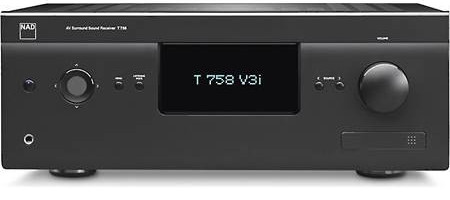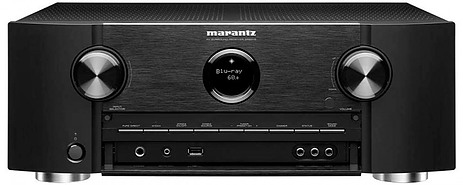Understanding Receiver Specs: What You Need to Know
Introduction
A receiver is a crucial component of any audio or home theater system. It acts as the central hub that connects all your audio and video devices, allowing you to control and amplify the sound. Understanding the specifications of a receiver is important because it directly impacts the performance and quality of your audio system. By understanding these specs, you can make informed purchasing decisions and ensure that you are getting the best possible rated home theater receiver and the best possible audio experience.
Importance of Understanding Receiver Specs
Receiver specs play a significant role in determining the overall performance of your audio or home theater system. Each spec provides valuable information about the capabilities and limitations of the receiver. For example, the frequency range and sensitivity specs determine the range of frequencies that the receiver can reproduce accurately and the level of sound it can produce with a given input signal. The signal-to-noise ratio (SNR) spec indicates the level of background noise that may be present in the audio signal, affecting the clarity and quality of the sound. Total harmonic distortion (THD) spec measures the amount of distortion introduced by the receiver, which can impact the overall sound quality.
Understanding these specs allows you to compare different receivers and choose the one that best suits your needs. For example, if you are an audiophile who values high-fidelity sound reproduction, you may prioritize receivers with a wide frequency range, low THD, and high SNR. On the other hand, if you are setting up a home theater system and prioritize immersive surround sound, you may focus on receivers with high power handling and channel separation specs.
Types of Receiver Specs
When shopping for a receiver, you will come across various specifications that provide information about its capabilities. Some of the most common specs include frequency range, sensitivity, SNR, THD, impedance, power handling, channel separation, and crosstalk. It is important to note that not all specs are equally important for every user. The importance of each spec depends on your specific needs and preferences.
Frequency Range and Sensitivity
The frequency range spec indicates the range of frequencies that the receiver can accurately reproduce. It is typically measured in Hertz (Hz) and represented as a range, such as 20Hz to 20kHz. The wider the frequency range, the more accurately the receiver can reproduce different types of audio, from deep bass to high treble.

Sensitivity, on the other hand, measures how efficiently the receiver can convert an electrical signal into sound. It is usually measured in decibels (dB) and represents the sound level produced by the receiver for a given input signal. A higher sensitivity rating means that the receiver can produce louder sound with less power.
These specs are important because they directly impact the quality of your audio. A receiver with a wider frequency range can reproduce a broader range of frequencies, resulting in more detailed and accurate sound reproduction. Similarly, a receiver with higher sensitivity can produce louder sound without straining the amplifier or speakers.
Signal-to-Noise Ratio (SNR)
The signal-to-noise ratio (SNR) spec measures the level of background noise present in the audio signal produced by the receiver. It is usually expressed in decibels (dB) and represents the ratio between the desired audio signal and the background noise. A higher SNR indicates a cleaner and clearer audio signal.
SNR is an important spec because it directly impacts the clarity of your audio. A receiver with a high SNR will produce audio with minimal background noise, allowing you to hear all the details in your music or movies. On the other hand, a receiver with a low SNR may introduce noticeable background noise, reducing the overall quality of the sound.
Total Harmonic Distortion (THD)
Total harmonic distortion (THD) is a spec that measures the amount of distortion introduced by the receiver. It represents the percentage of additional harmonics or unwanted frequencies that are added to the original audio signal. A lower THD indicates less distortion and cleaner sound reproduction.
THD is an important spec because it directly impacts the overall sound quality of your audio. A receiver with low THD will reproduce the audio signal accurately, without introducing noticeable distortion. On the other hand, a receiver with high THD may introduce audible distortion, affecting the clarity and fidelity of the sound.
Impedance and Power Handling
Impedance is a spec that measures the resistance to the flow of electrical current in a speaker or amplifier. It is usually measured in ohms (Ω) and represents the load that the receiver sees from the speakers. Power handling, on the other hand, measures the maximum power that the receiver can deliver to the speakers without distortion.
These specs are important because they impact the power and volume of your audio. A receiver with a lower impedance rating can deliver more power to the speakers, resulting in louder sound. Similarly, a receiver with higher power handling can drive speakers with higher power requirements without distortion.
Channel Separation and Crosstalk
Crosstalk, on the other hand, measures the amount of unwanted signal leakage between different channels. It is usually measured in decibels (dB) and represents the level of interference between channels. A lower crosstalk rating indicates less interference and better separation between channels.
These specs are important because they impact the clarity and separation of your audio channels. A receiver with high channel separation will reproduce each channel’s audio signal accurately, without bleeding into other channels. Similarly, a receiver with low crosstalk will minimize interference between channels, resulting in a more immersive and realistic audio experience.
Audio and Video Formats
Receivers support various audio and video formats, such as Dolby Atmos, DTS:X, Dolby TrueHD, and DTS-HD Master Audio. These formats provide enhanced surround sound and audio quality, making your listening experience more immersive and realistic. It is important to choose a receiver that supports the formats you need to ensure compatibility with your audio and video sources.
Additionally, some receivers also support video formats, such as 4K Ultra HD, HDR (High Dynamic Range), and Dolby Vision. These formats allow you to enjoy high-resolution and vibrant video content on your TV or projector. Choosing a receiver that supports the video formats you need is essential for a seamless and high-quality video experience.
Choosing the Right Receiver Based on Specs
When choosing a receiver, it is important to consider your needs and the specs that are most important to you. Start by determining your budget and the size of your room. This will help you narrow down your options and choose a receiver that fits within your budget and can adequately power your speakers.
Next, prioritize the specs that are most important to you. If you value high-fidelity sound reproduction, focus on receivers with a wide frequency range, low THD, and high SNR. If you prioritize immersive surround sound, look for receivers with high power handling, channel separation, and crosstalk specs. Consider the audio and video formats that you need and choose a receiver that supports them.
Lastly, read reviews and compare different models to get a better understanding of their performance and reliability. Pay attention to user reviews as they can provide valuable insights into real-world experiences with the receiver.
Conclusion
Understanding receiver specs is crucial for getting the best possible performance from your audio or home theater system. Each spec provides valuable information about the capabilities and limitations of the receiver, allowing you to make informed purchasing decisions. By considering specs such as frequency range, sensitivity, SNR, THD, impedance, power handling, channel separation, and crosstalk, you can choose a receiver that meets your specific needs and delivers the audio experience you desire. Remember to consider your budget and the size of your room when choosing a receiver, and prioritize the specs that are most important to you. With the right receiver, you can enjoy high-quality audio and create an immersive home theater experience.
I’m excited to have you as part of the community! I look forward to bringing you more exciting content in the future. In the meantime, please don’t hesitate to reach out if you have any further questions or comments. Here at Audio Video Adventures is where you can get all the latest in Projectors, Receivers, Speakers, and accessories as well as everything else you need for the ideal home theater experience. .